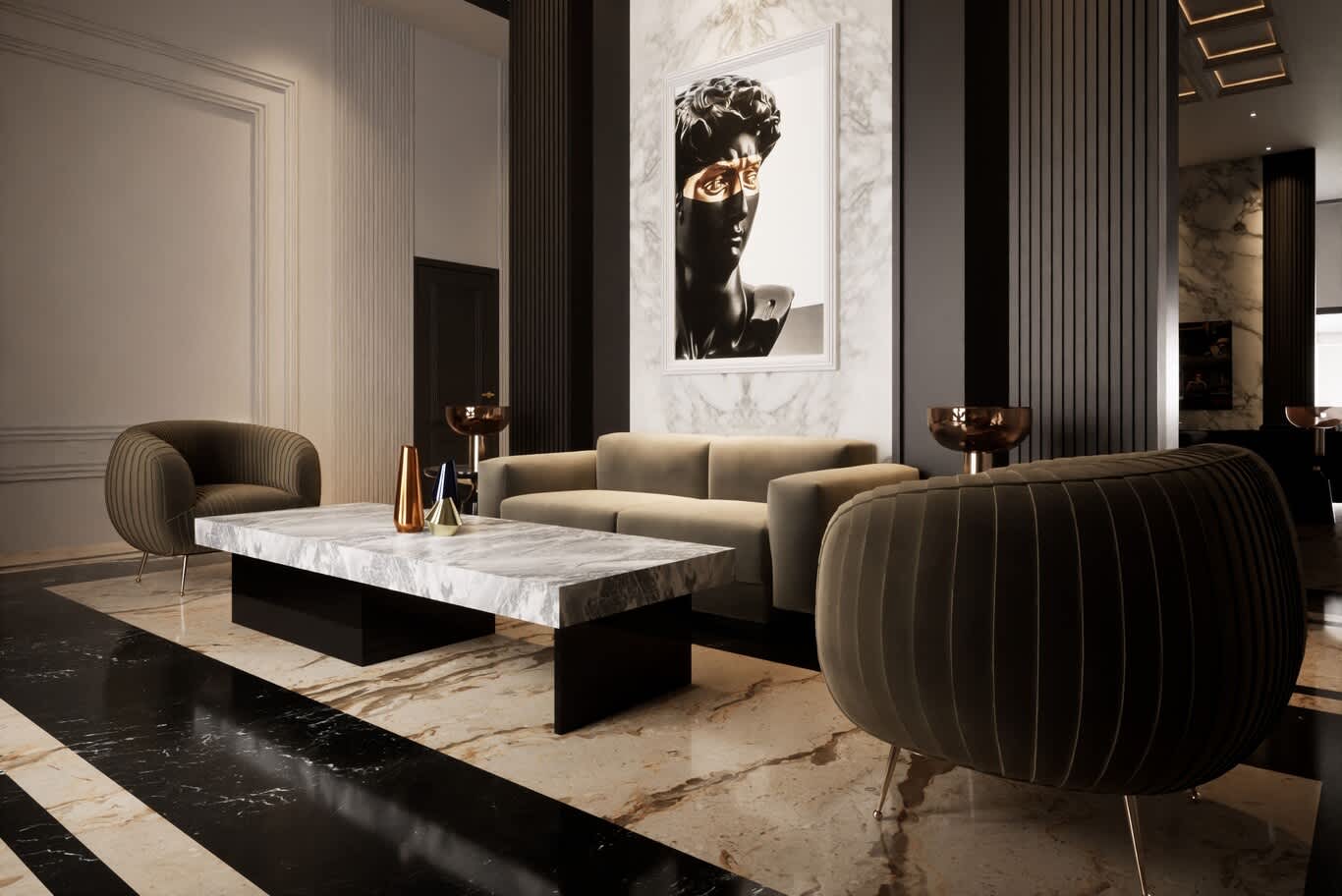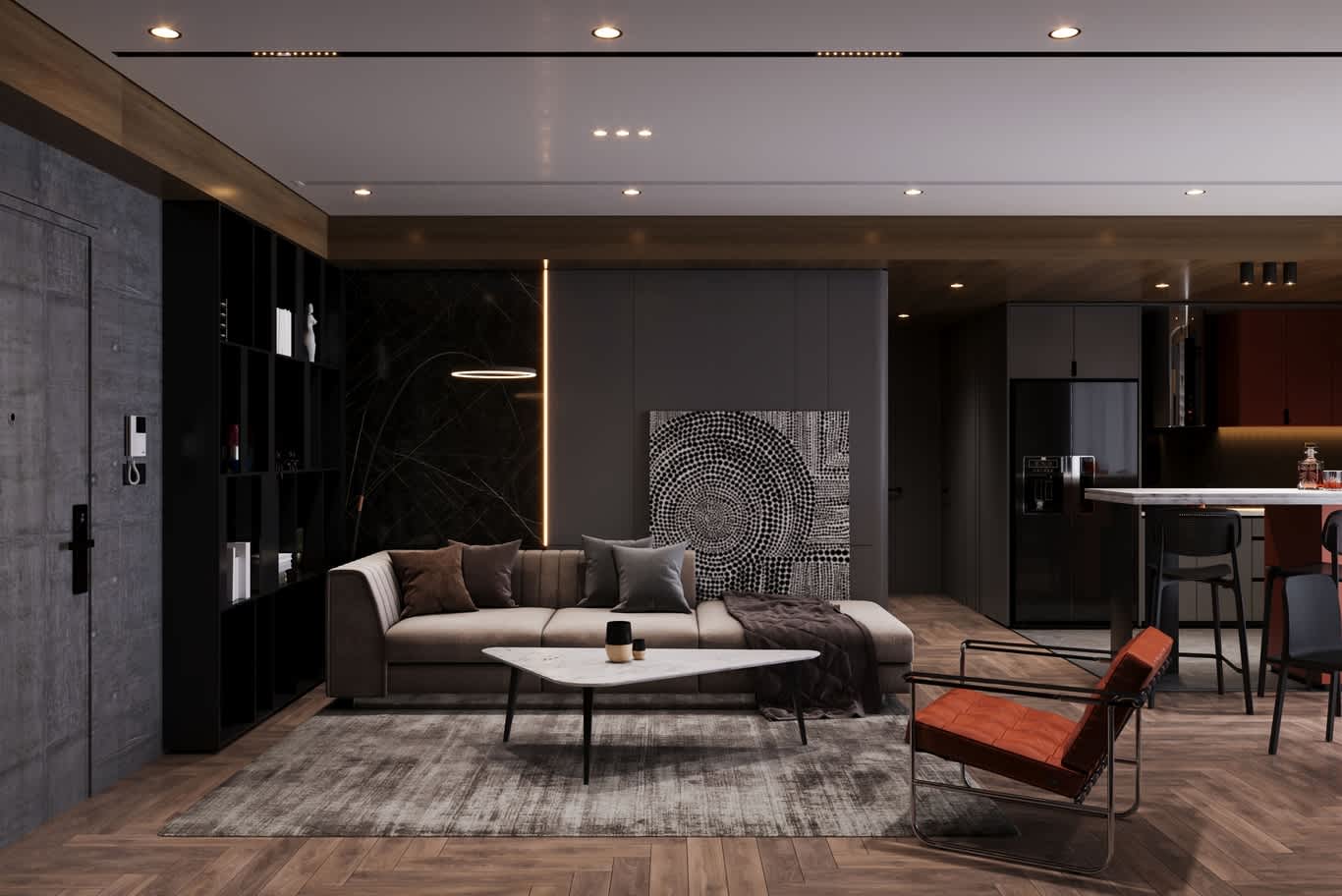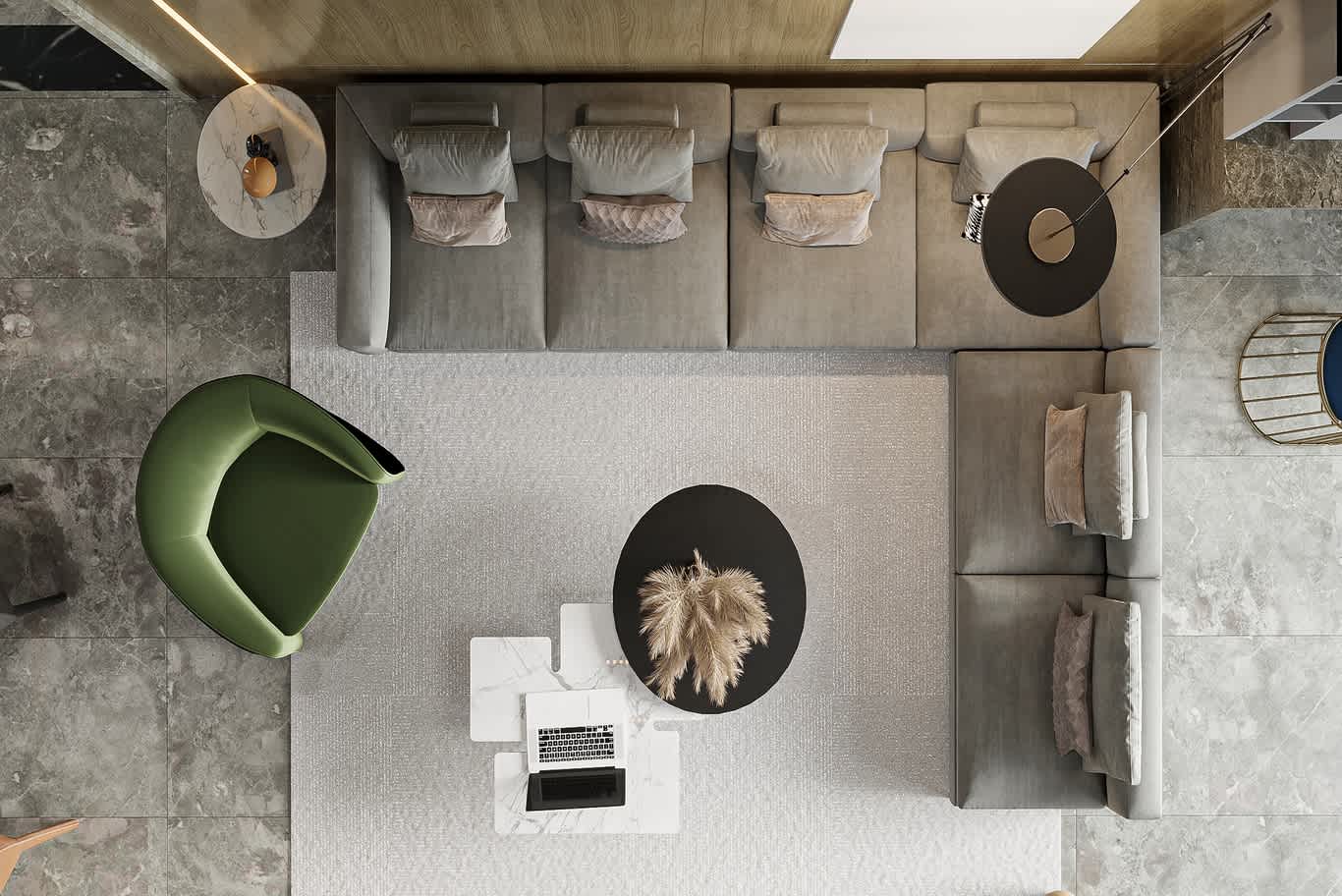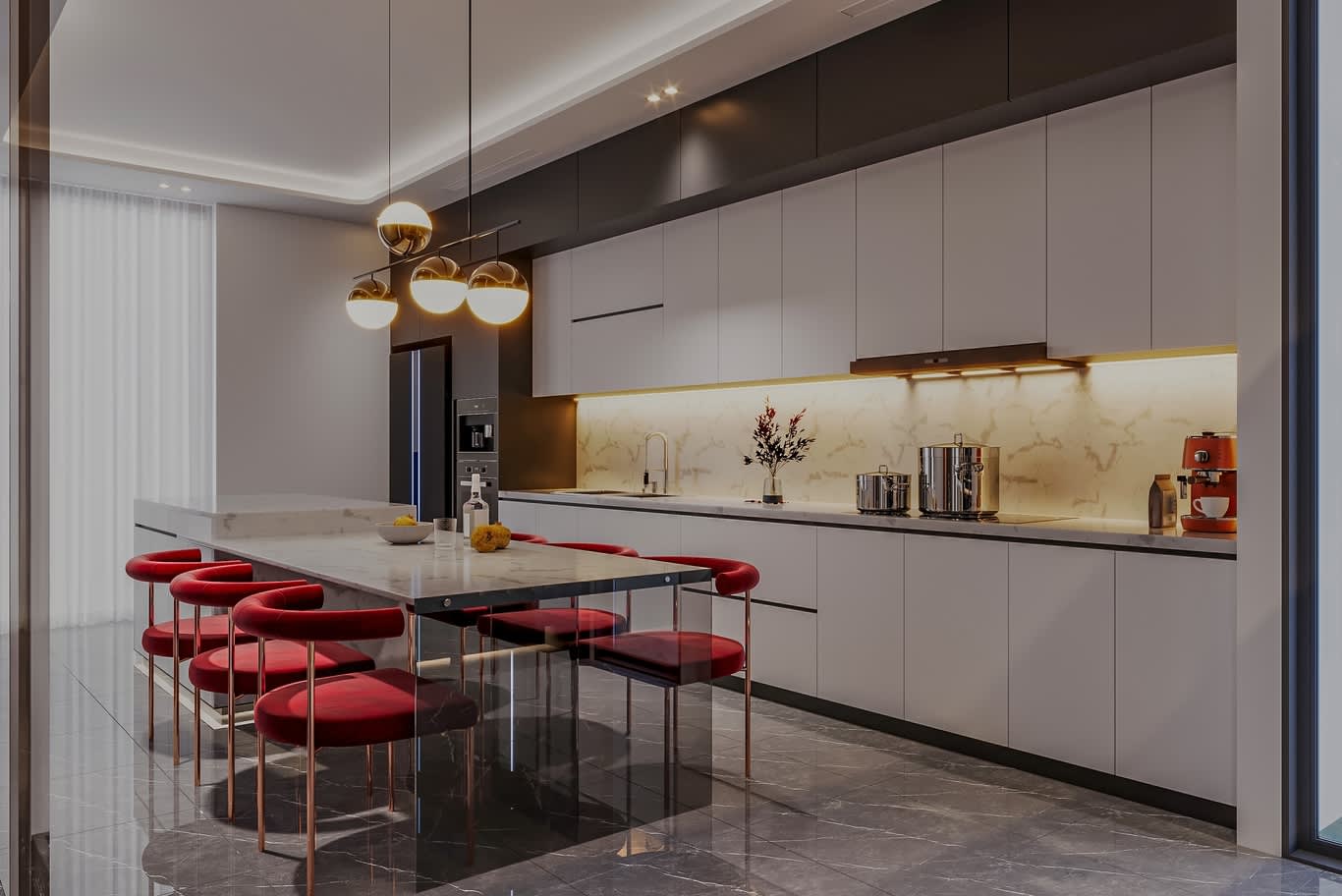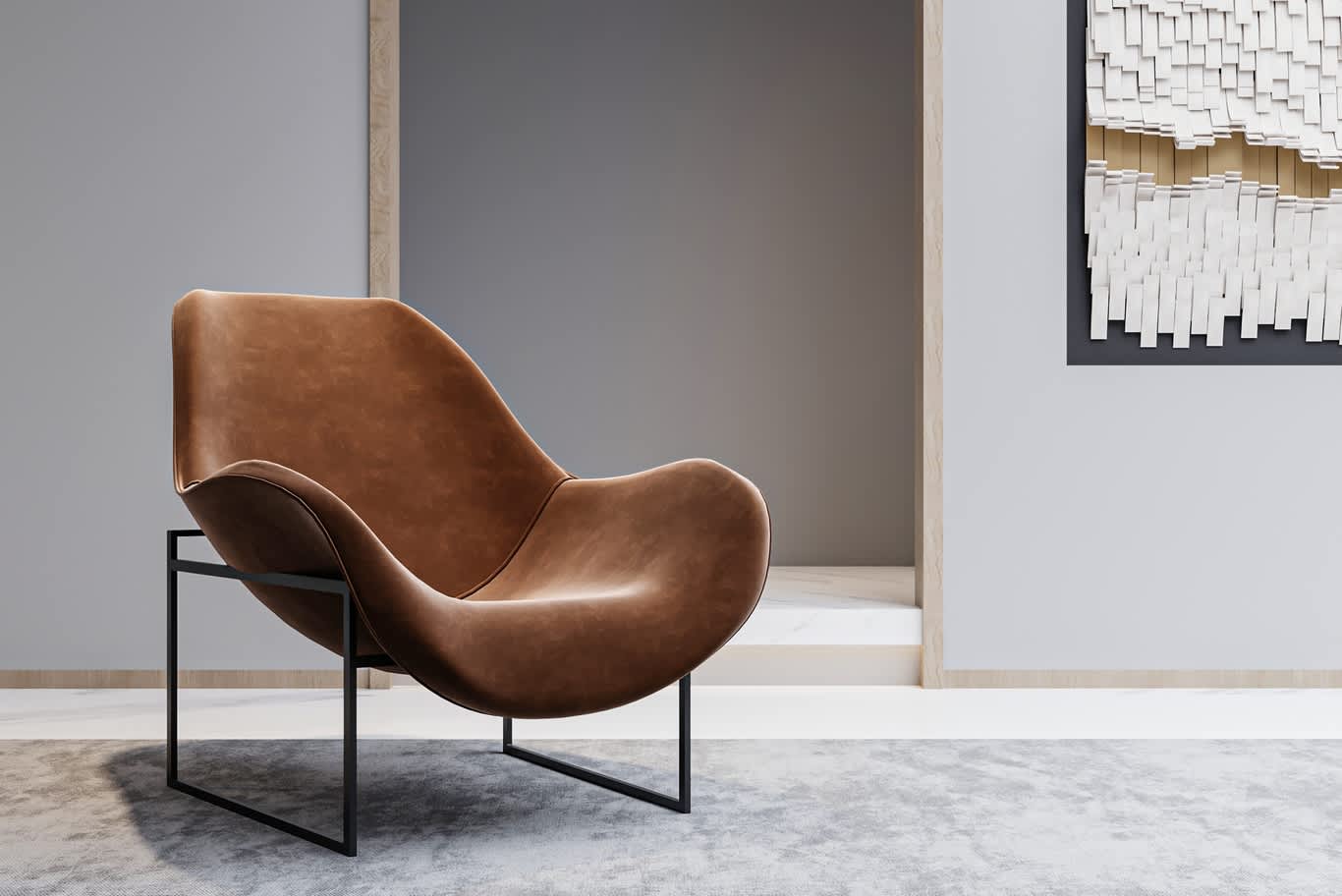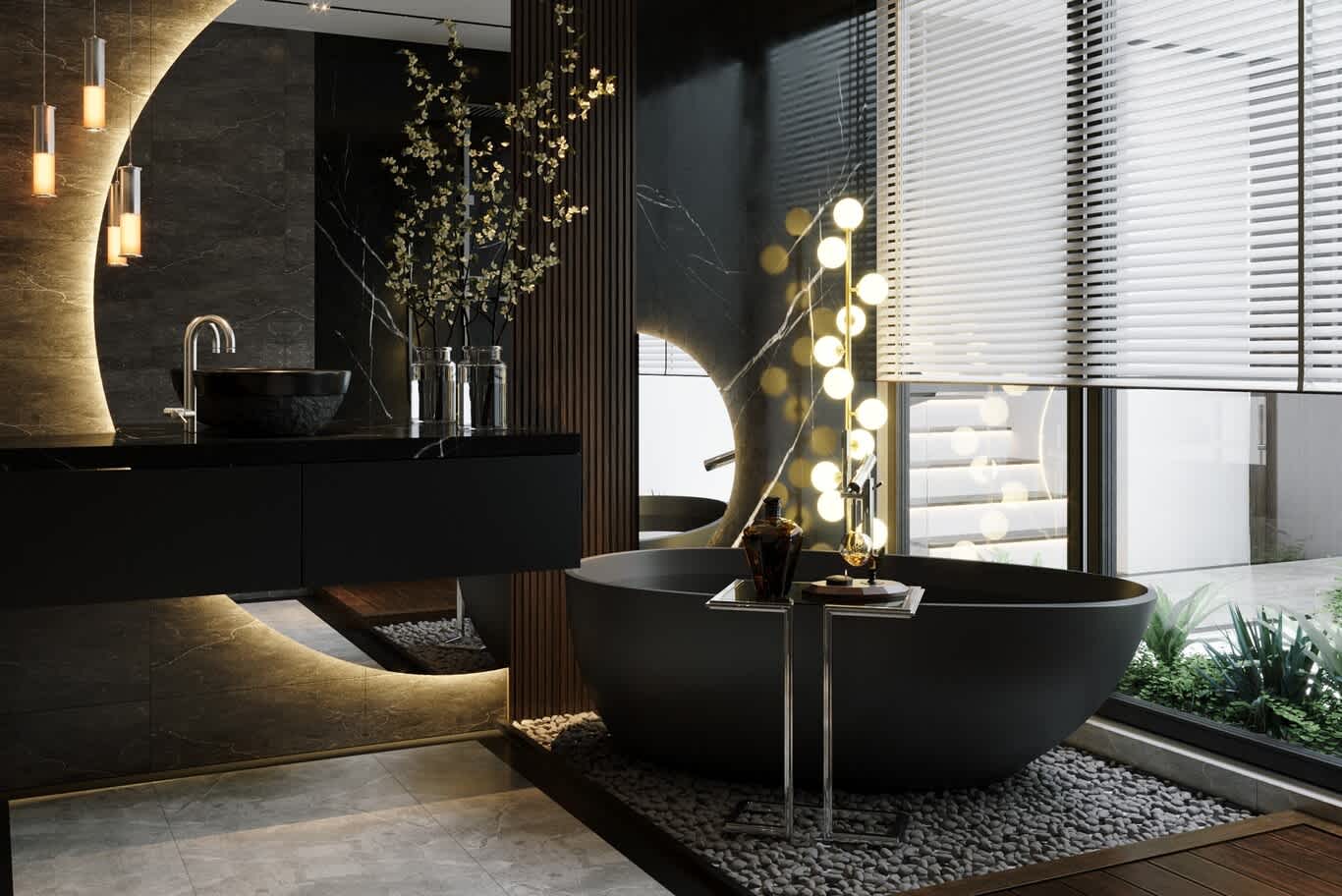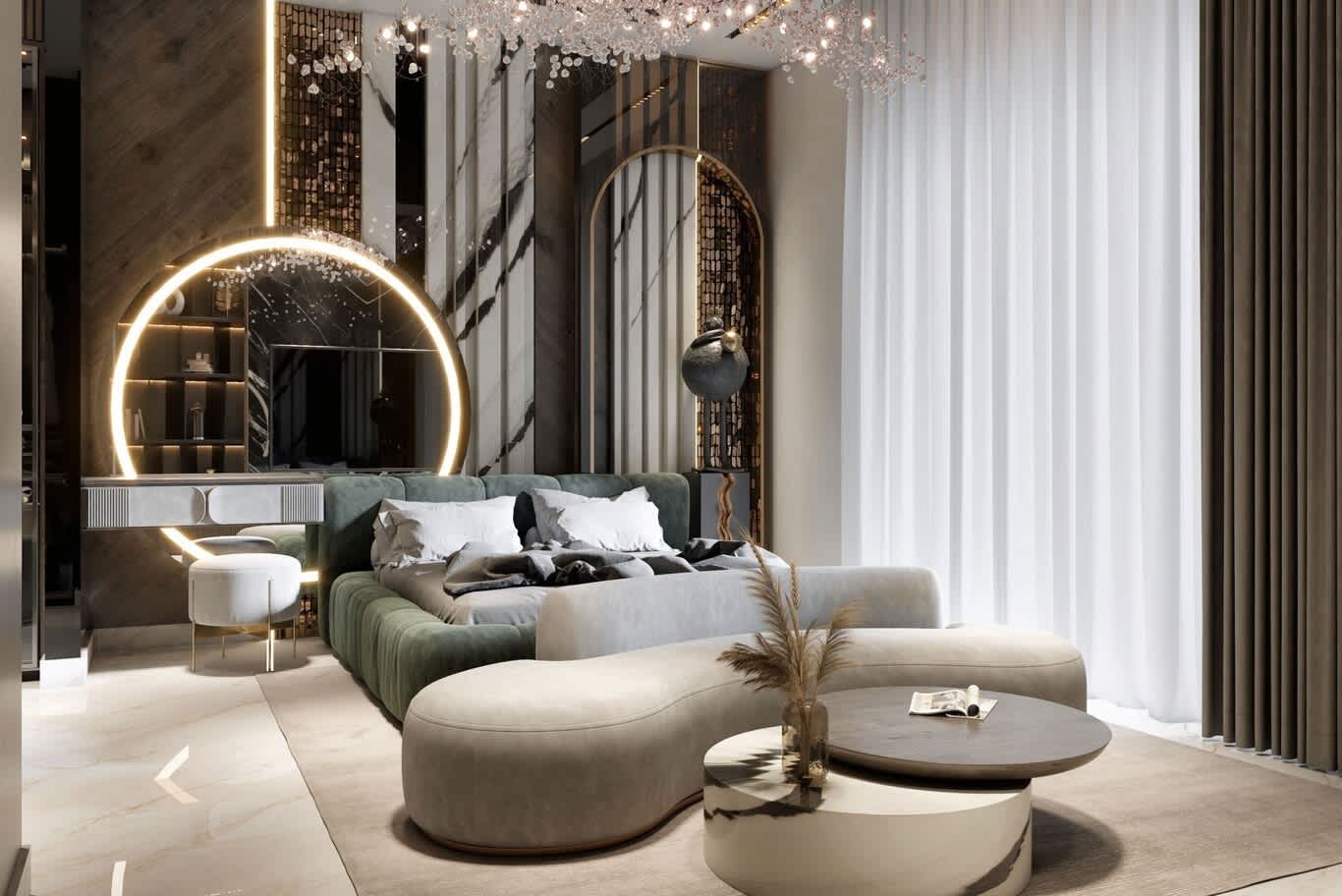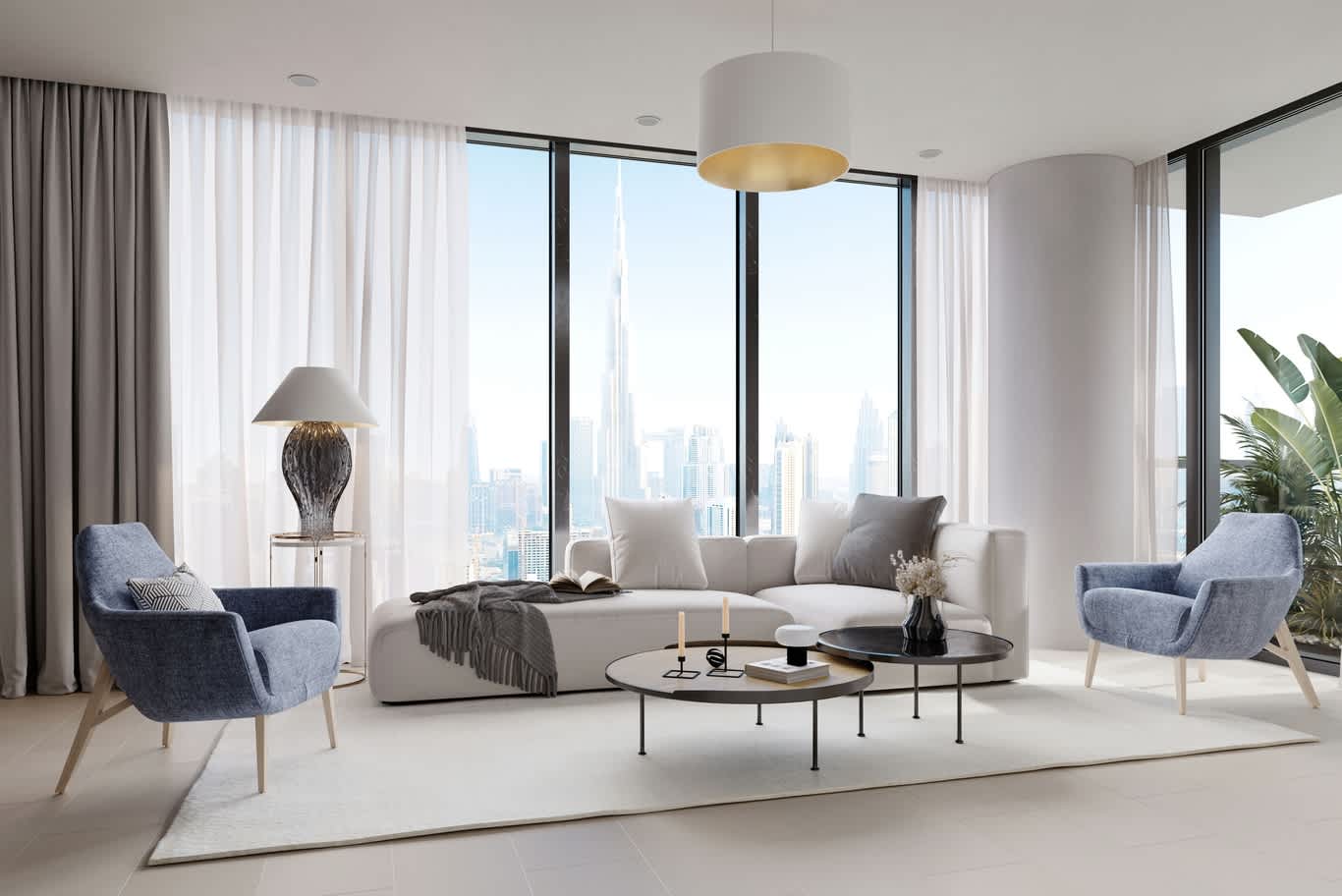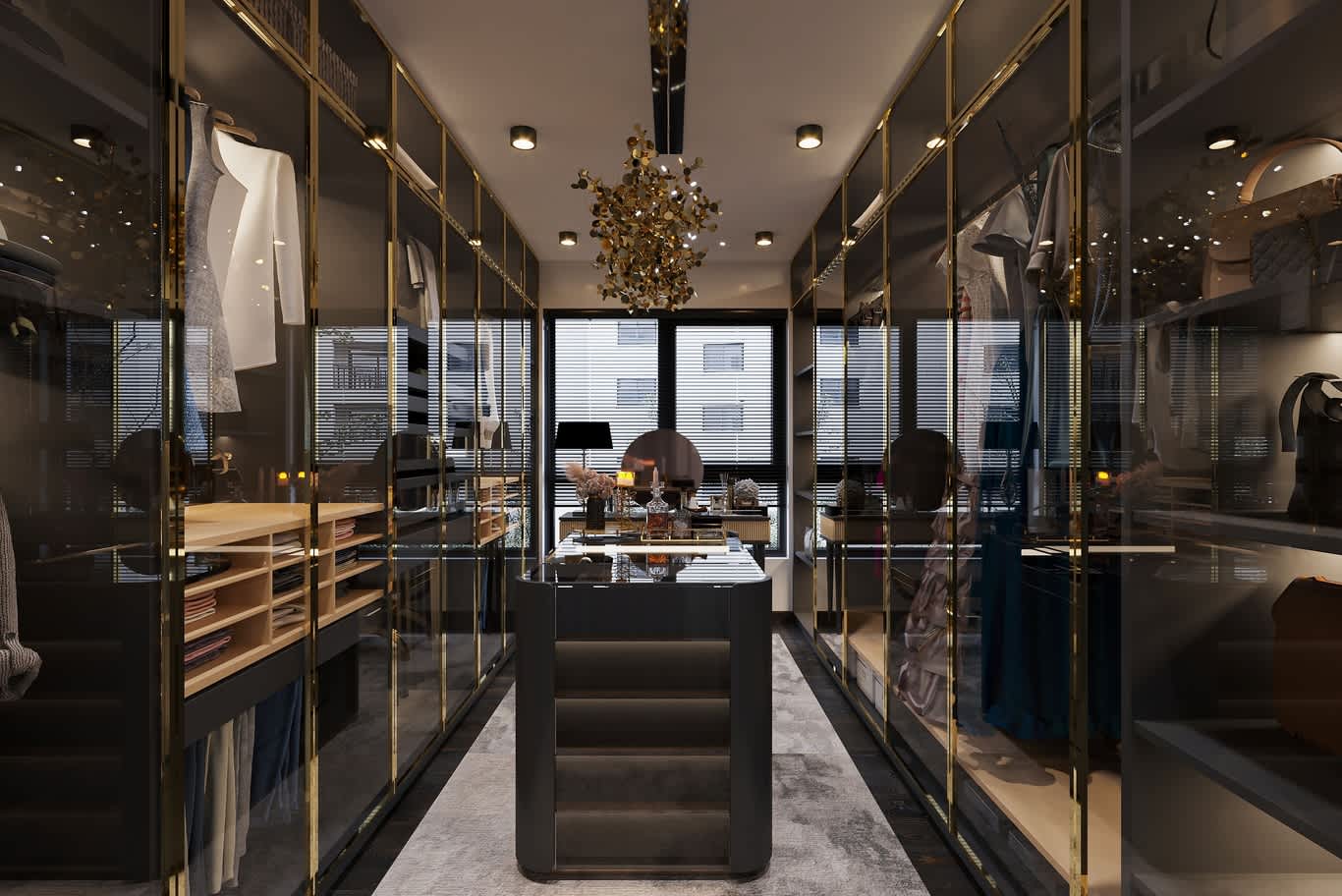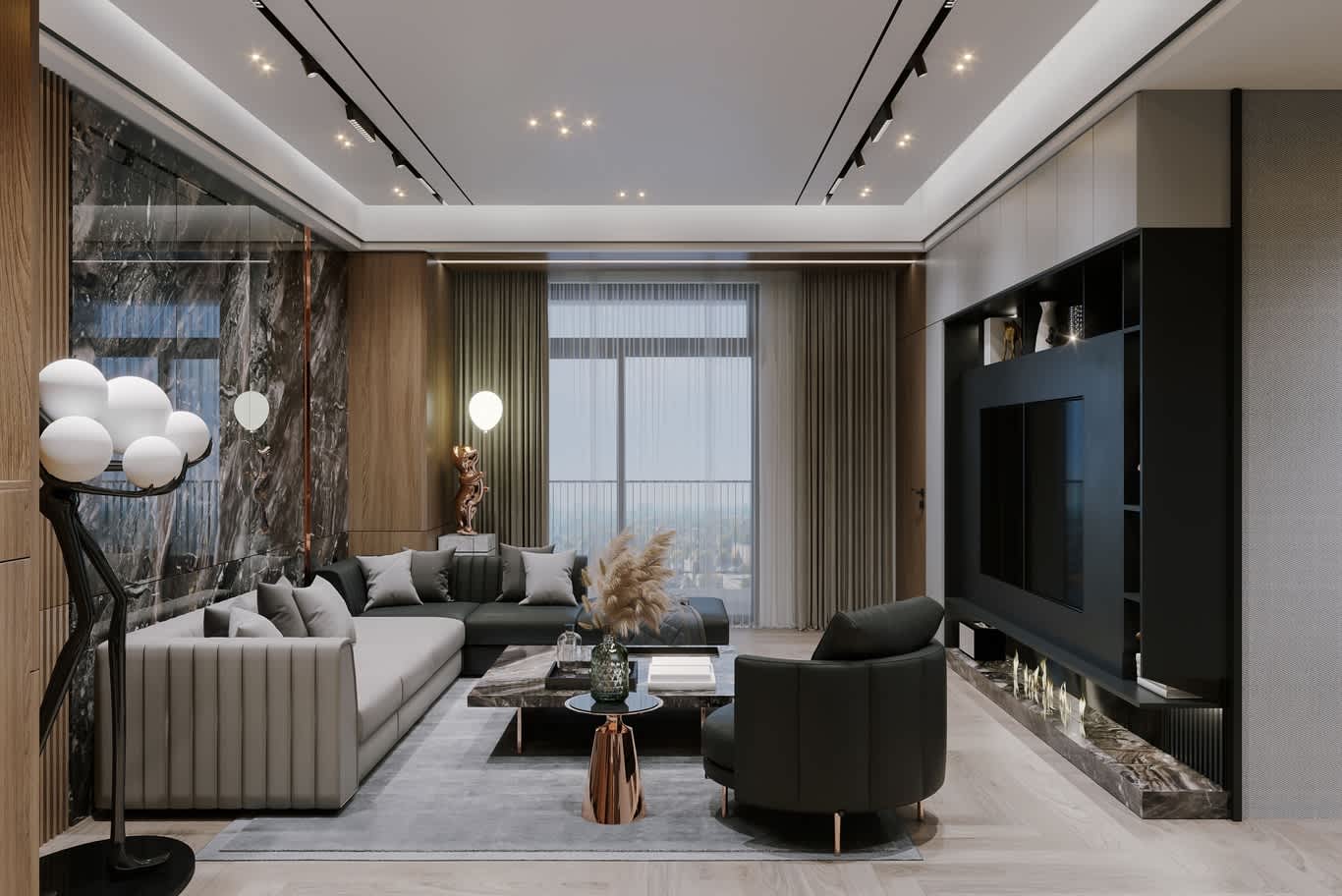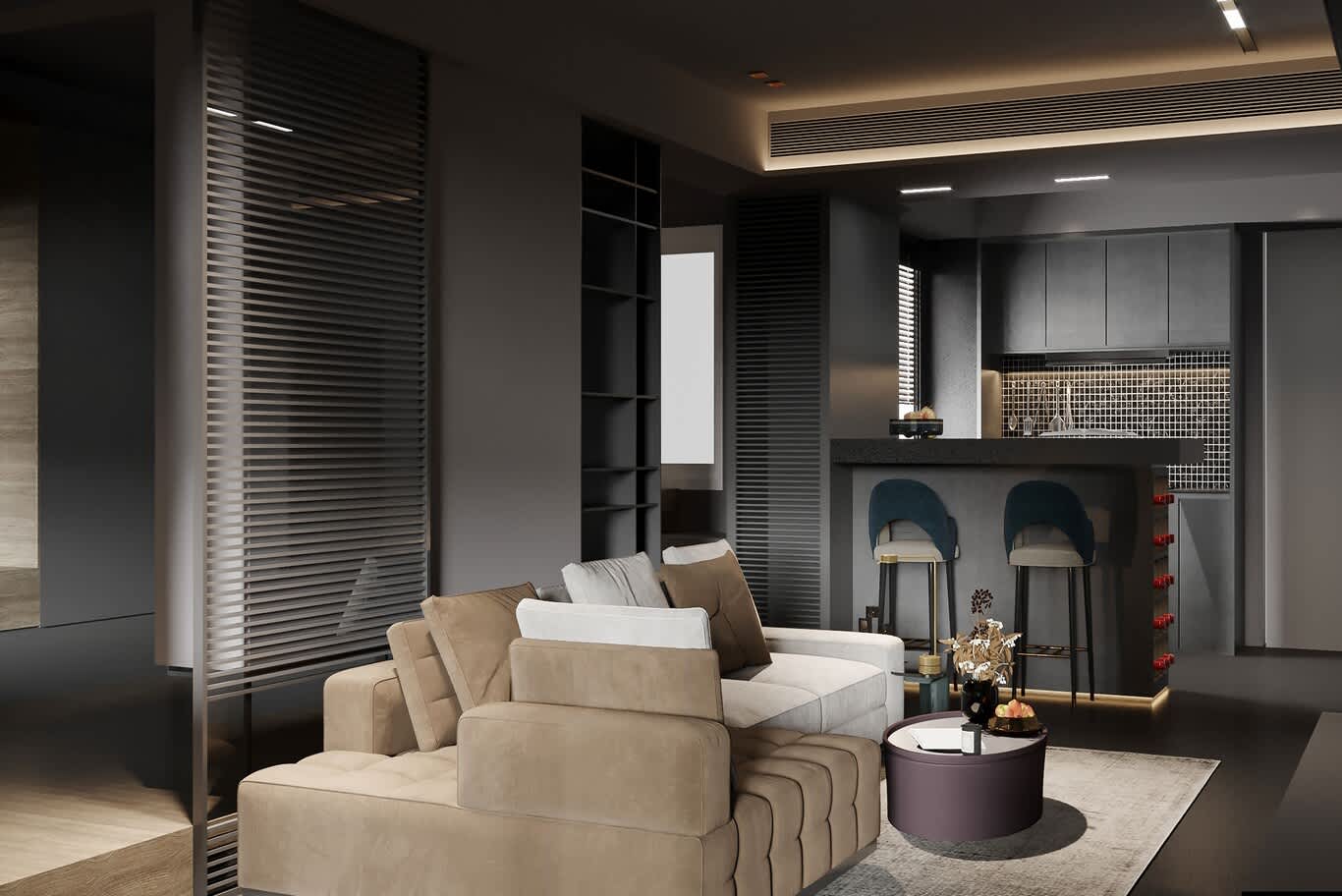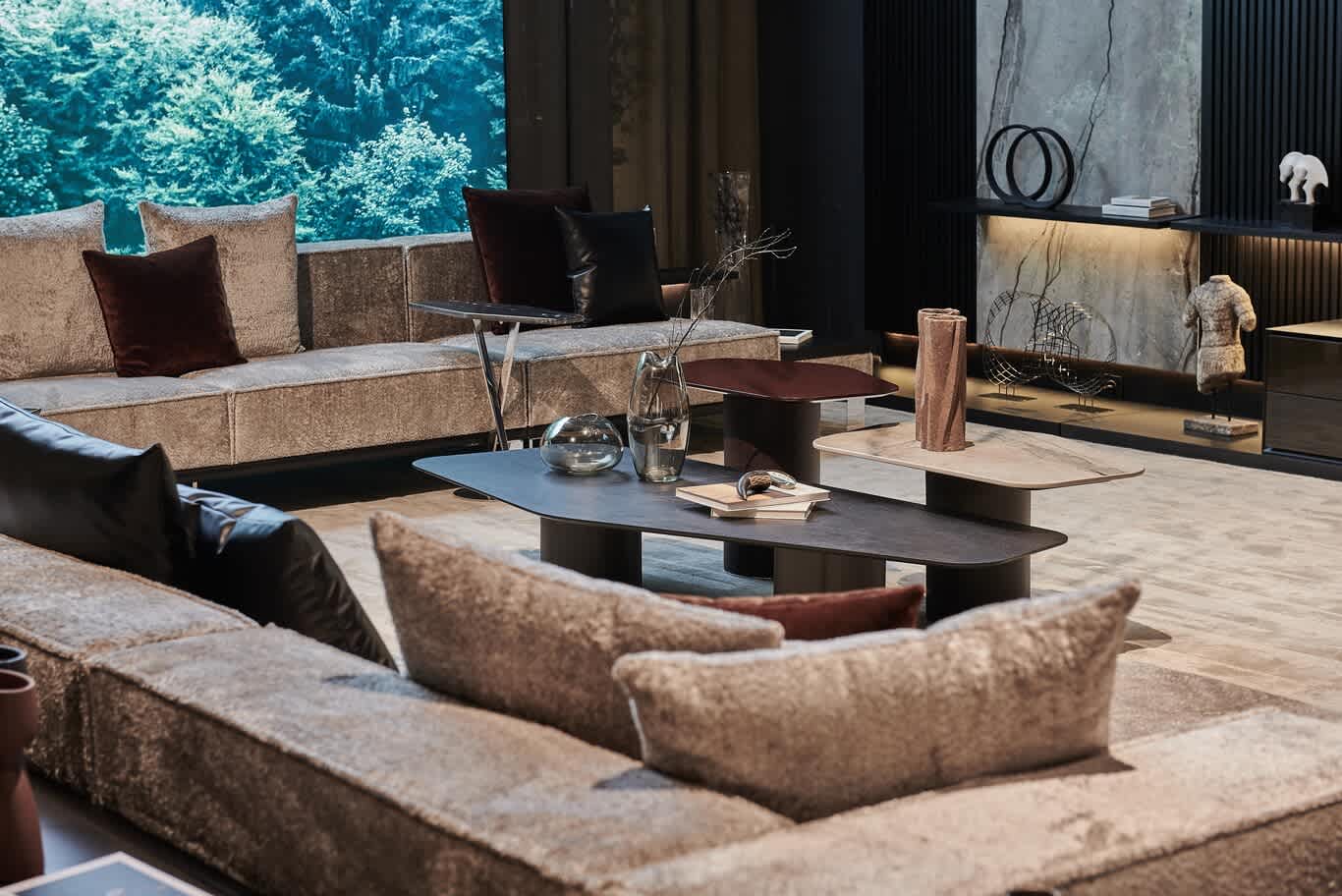Home Page | Blog | 7 Tips To Make Your Small Home Look Larger
7 Tips To Make Your Small Home Look Larger
10/30/2025
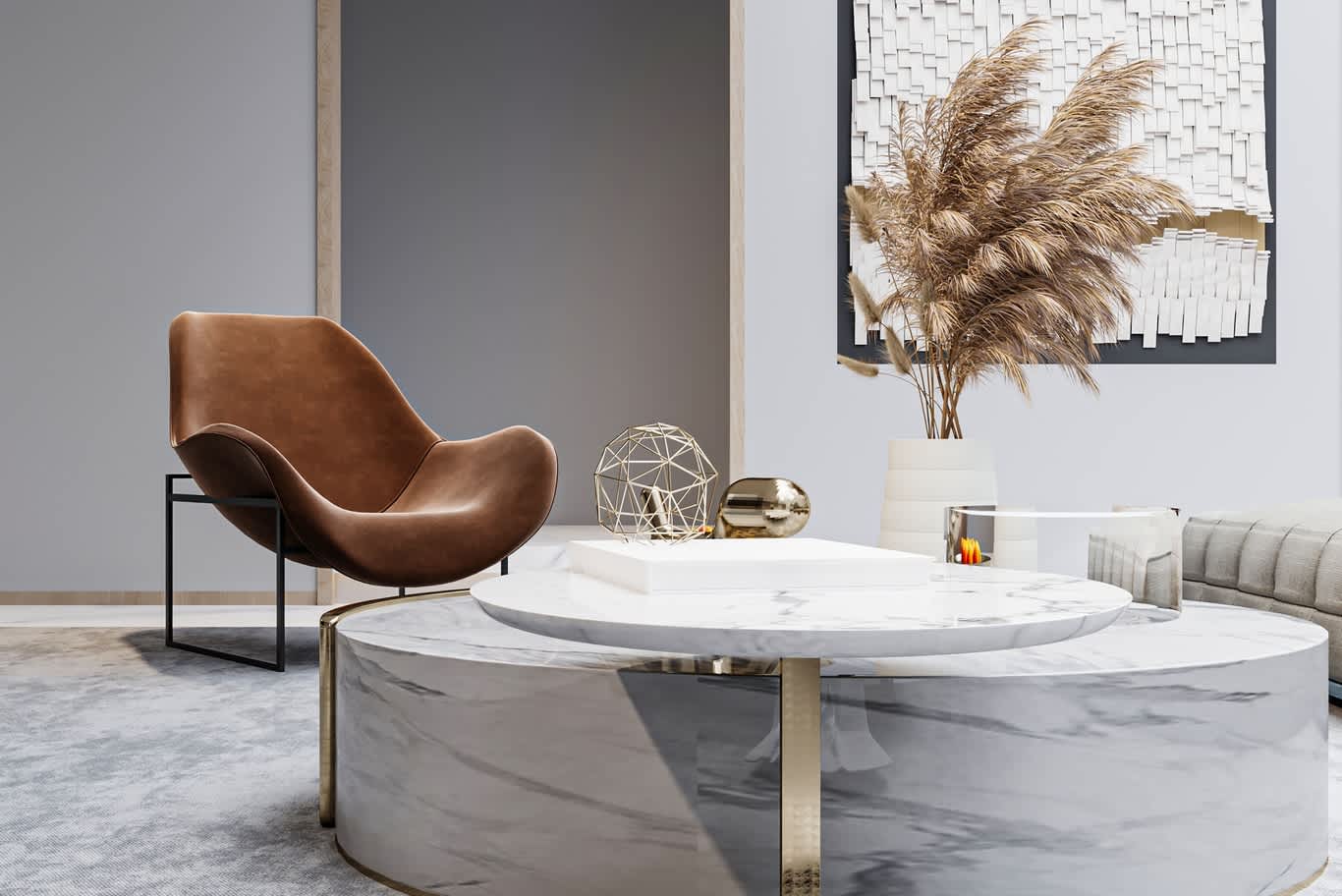
Living in a compact home doesn’t mean you have to feel hemmed in. Whether your “tiny home” is a micro‑studio in the city or a snug cottage in the suburbs, smart design choices can make even the smallest spaces feel airy and inviting. Professional designers routinely transform cramped apartments into dwellings that feel twice their size, and their tactics aren’t mystical secrets reserved for TV makeovers. They’re deliberate choices about what you keep, what you bring in, and how you arrange it.
This comprehensive guide distils expert advice into seven practical strategies that can help you reimagine your home’s footprint — without knocking down walls or embarking on costly renovations. Each tip draws on expert insight from interior designers, architects and professional organizers so you can confidently employ them in your own space.
1. Declutter ruthlessly to free up breathing room
The single most transformative step for a small home is free: get rid of things you don’t need. Mohab Ayoub, CEO of Algedra Group, points out that the fastest way to make a space feel larger is to pare back possessions until surfaces and floor areas are clear. Less stuff literally means more space for you to move around and more room for your eyes to rest. If you’re used to stacking mail on the kitchen counter or using the dining table as a catch‑all, find or create dedicated storage (even if it’s just a shallow basket) and commit to clearing those surfaces daily.
Decluttering isn’t just about throwing things out; it’s about editing with intention. Designer Tareq Skaik reminds readers that every piece in a small bedroom must “earn its place”. Pretend you’re curating an art exhibition – each object should either serve a purpose or bring you joy. Start with visible clutter: oversized electronics, piles of shoes, rarely used small appliances, or stacks of books on the floor. Then tackle hidden clutter, especially items stored in boxes you never open. Donate, sell or recycle what you can and only keep what you genuinely need or love.
Finally, build maintenance into your routine. Clutter tends to creep back in when you’re busy. Set aside 10 minutes at the end of each day to reset your rooms. Wipe down counters, return loose items to their places and file papers immediately. By consistently editing your belongings and maintaining clear surfaces, you’ll notice how much larger your home feels when it isn’t visually shouting at you from every corner.
2. Unify and lighten your colour palette for visual expansion
Colour isn’t just decorative — it can trick the eye. Painting the ceiling the same colour as the walls eliminates the abrupt horizontal break that typically stops your gaze, thereby making a room feel taller. Matching walls and ceilings “gives the illusion of more space because the eye doesn’t stop at a white ceiling”. Algedra also recommends painting trim and baseboards the same colour so nothing interrupts the eye’s journey around the room.
Light colours have long been associated with an airy feeling. The renovation experts at Décor Makers explain that whites, creams, soft greys and pastel hues “reflect natural and artificial light” and instantly make a room feel “airy and more expansive”. If you’re worried about monotony, add pops of colour through accessories such as cushions, vases or artwork. Using different shades of the same hue (tone‑on‑tone layering) also enlarges a space, because subtle variation keeps the eye moving. Designers tell that layering similar tones across walls, textiles and decor “tricks the eye into reading the space as more generous”.
Colour can also be used boldly. Algedra notes that rich colours can work in small spaces when applied consistently across walls, ceiling and trim. However, darker colours need good lighting to bounce off, so consider high‑gloss finishes or strategic light fixtures if you go this route. Designers advise that painting walls and ceilings the same colour, even a dark one, can make the space “really pop and feel bigger” when paired with a high‑gloss paint and adequate lighting. Whichever palette you choose, the key is consistency: avoid abrupt colour changes between adjacent surfaces that create visual stops and shrink the room.
3. Let mirrors and reflective surfaces double your space
Mirrors are a designer’s secret weapon because they bounce light around and create the illusion of depth. Many designers call mirrors and reflective surfaces “interior design’s secret weapons” that can transform a home into a brighter and more expansive haven. By placing a mirror opposite a window, you effectively create a second window, doubling the amount of perceived light. Even in rooms without abundant natural light, mirrors can reflect artificial light and make the space feel less confined. Decorative metallics and glass also amplify the effect; glossy countertops, chrome hardware and metallic accents scatter light in multiple directions.
Size and placement matter. To make a room feel bigger you should “use floor‑to‑ceiling mirrors or mirror an entire wall”. Algedra also recommends pier mirrors — tall and narrow designs originally used between windows — to elongate a wall. For a subtler approach, use a series of smaller mirrors grouped vertically to draw the eye up.
Mirrors aren’t the only reflective tools available. Metallic furniture, glass coffee tables or acrylic chairs lend a sense of weightlessness because you can see through or around them. Reflective light fixtures like brass pendants or mirrored backs on bookshelves also help scatter light. Just remember that reflective surfaces magnify whatever they show; keep the area around them tidy, or else you risk amplifying clutter.
4. Choose space‑savvy furniture
Furniture can either free up space or swallow it whole. Choosing the right pieces is about balancing size, functionality and transparency. Rather than cramming lots of small pieces into a room, select a few appropriately scaled items. By contrast, multiple tiny chairs and tables clutter the eye, making the room feel chopped up.
Opt for furniture with clean lines and slender legs. Tareq Skaik advises that cleaner lines create more functional seating. Leaving air visible beneath furniture opens up floor space and gives the illusion of floating pieces.
When every inch counts, pieces that serve multiple functions are indispensable. Mohab Ayoub explains that multifunctional furniture — such as sofa beds, lift‑top coffee tables or ottomans with storage — consolidates functions into one item and “frees up physical space” while encouraging a minimalist lifestyle. This type of furniture is designed to be versatile and allows you to repurpose a room easily when guests arrive or your needs change.
Transparency is another trick. Algedra suggests incorporating glass, lucite or acrylic pieces that visually disappear. A ghost chair or clear coffee table reveals more floor and makes the space feel lighter. And when selecting upholstered pieces, look for tight backs and arms rather than bulky rolled arms or deep tufting — simple silhouettes take up less visual space. Ultimately, choose furniture that fits your needs, but don’t be afraid of a statement piece if it’s scaled to the room and leaves breathing room around it.
5. Make the most of vertical space
Your walls are an untapped resource. In small homes, floor space is precious, so designers look upward. Mohab Ayoub notes that vertical storage “utilizes the often‑overlooked vertical dimension” and by installing shelves, cabinets or pegboards on your walls you free up valuable floor area and create a sense of openness. Even the back of a closet door can be a “major problem solver” with an over‑the‑door rack for shoes, gift wrap or toiletries. In closets with tall ceilings, restacking lidded bins and installing shelves above reachable levels to store rarely used items.
Vertical storage extends beyond closets. In living rooms, floor‑to‑ceiling bookshelves draw the eye upward and frame a room. Décor Makers suggests reaching to the ceiling with shelves and cabinets because it both maximizes storage and “creates the illusion of a taller and larger space”. Interior designer at Algedra Turkey advises investing in furniture that can be packed away when not in use and stacking elements to save room. This approach allows you to display books or artwork while using less floor area.
Curtains are another vertical tool. Hanging curtain rods at ceiling height elongates a room and makes windows appear larger.
Don’t forget vertical lighting. Mounting wall sconces or pendant lights frees up nightstands and makes the room feel lighter and more open. And while vertical storage often encourages using space above cabinets, take caution against stacking items on top of kitchen cabinets. It’s hard to access and tends to collect dust — leaving the space empty can actually reduce visual clutter. Use your vertical real estate wisely: add storage where you can reach it and leave the highest areas clear to maintain an open feel.
6. Harness natural light and airy window treatments
Light is the ultimate space enhancer. Natural light makes colours appear truer and spaces feel alive. Algedra underscores the importance of keeping windows clean, using light‑coloured window treatments and trimming foliage outside to maximize sunlight. Dirty windows block light, so clean them regularly; sheer curtains diffuse sunlight rather than blocking it. Light‑toned upholstery and glossy finishes on furniture can also bounce light around the room, enhancing the effect.
Décor Makers advises using sheer curtains or blinds and paying attention to window placement when designing your space. Sheer fabrics allow daylight to fill the room while still providing privacy. Combine sheer panels with heavier drapes that can be pulled aside to frame the window, thereby making the window appear larger.
In bedrooms, lights often occupy bedside tables, making the area feel cluttered. Designer Tareq Skaik suggests replacing table lamps with wall‑mounted sconces or pendant lights to free up surfaces and make the room feel more open. Reflective surfaces amplify natural light; mirrored backs inside cabinets or shimmering accessories scatter light further. If your home lacks natural light, consider bright, full‑spectrum LED bulbs with adjustable temperatures to mimic daylight and prevent gloomy corners from shrinking the perceived space.
7. Create depth, movement and personality with layout and decor
Beyond colour and furniture, the way you arrange objects influences how big or small a room feels. One of the first myths to dispel is that everything must hug the walls. Although pushing furniture against walls seems logical, it can actually split the room in half. Floating the sofa or chairs off the wall — even by a few inches — gives the room breathing space and keeps sight lines open. Arrange furniture so that you can see the full length of the room rather than blocking your own view.
Decorate with intention. Algedra encourages curating decor by choosing fewer but larger pieces of art; statement art reduces visual noise and makes the space feel orderly. A single oversized piece commands attention, whereas clusters of small frames create clutter and make walls close in. One oversized piece of wall art has far more impact than a bunch of little frames. When selecting accessories, think in terms of scale and grouping; odd numbers of items (three vases instead of seven) look intentional and keep surfaces from feeling crowded.
Patterns can actually help. The key is to choose bold, large‑scale prints rather than tiny patterns that make walls feel busy. In open areas, placing a large area rug that defines a seating zone can anchor the room and make surrounding space feel deliberate.
Don’t be afraid of walls — they can create depth. Differentiating zones with different colours or finishes adds visual layers.
Finally, bring nature inside. Décor Makers recommends adding plants or nature‑inspired accessories to introduce texture and depth. Even a small potted tree draws the eye upward and fills awkward corners without overwhelming the space. Plants also improve air quality and can make a room feel calmer and more expansive.
Designing Small Homes for the UAE and MENA Lifestyle
From the shimmering skyline of Dubai to the cultural heart of Cairo, and from Riyadh’s modern villas to the artistic homes of Doha and Kuwait City, homeowners everywhere face a shared challenge — how to make limited space feel limitless.
At Algedra, we design small luxury apartments in Dubai, compact family homes in Abu Dhabi, and modern Arabic interiors across Saudi Arabia, Egypt, Qatar, and Oman — each designed to local architecture, climate, and lifestyle. Every project blends modern elegance with cultural authenticity, ensuring your space feels expansive while remaining true to regional identity.
Our expert team uses strategies like multi-functional furniture, open-plan layouts, light-reflective color palettes, and customized storage solutions to maximize every inch.
Whether it’s a minimalist penthouse in Istanbul, a chic apartment in Beirut, or a contemporary townhouse in London or New York, our goal is the same — to design homes that breathe sophistication, serenity, and space.
Wherever you live — in the UAE, MENA, or globally — Algedra brings world-class design expertise to your doorstep, transforming small interiors into elegant expressions of modern living.
Conclusion: your small home, reimagined
Living in a small home doesn’t mean resigning yourself to cramped quarters. By decluttering regularly, using a cohesive colour palette, strategically placing mirrors, choosing multifunctional furniture, exploiting vertical space, maximizing light and employing thoughtful layouts, you can transform your compact dwelling into a serene and spacious retreat. These tips work together: decluttering and clever storage free up floor space; colour and mirrors trick the eye; good furniture choices and lighting support flow; and intentional decor adds personality without clutter. As you implement these strategies, observe how each change affects the way you perceive your environment. Small adjustments — like raising a curtain rod or adding a full‑length mirror — may have an outsized impact. Ultimately, making a small home look larger is less about square footage and more about thoughtful design. With the right approach, your home can feel expansive, welcoming and uniquely yours.
Contact Us
Ready to transform your small home into a spacious sanctuary?
Let the expert interior designers at Algedra Interior Design help you reimagine your space with elegance and functionality.
Schedule your free design consultation today!
Our specialists will create a personalized layout that maximizes every inch of your home — blending modern aesthetics with practical comfort.
(or contact us at hello@algedra.ae)
Frequently Asked Questions (FAQs)
1. What colors make a small room look larger?
Light, neutral shades such as soft whites, beige, pale gray, or light pastels reflect more light and visually expand the space. According to interior designers, painting walls, trims, and ceilings in similar hues creates a seamless flow that makes the room feel airier and more open.
2. How can furniture placement affect room size perception?
Proper furniture placement is key to optimizing small spaces. Keeping pathways clear, floating furniture away from walls, and choosing pieces with exposed legs create a sense of depth. Multi-functional furniture — like sofa beds or expandable dining tables — also helps reduce clutter.
3. Are mirrors really effective in making rooms appear larger?
Yes! Mirrors reflect natural and artificial light, adding brightness and depth to a room. When placed opposite a window or a light source, they double the visual impact of space and openness — one of the oldest yet most reliable design tricks.
4. What kind of lighting works best in small homes?
Layered lighting makes a huge difference. Combine ambient (ceiling), task (table or floor lamps), and accent (wall sconces or LED strips) lighting to highlight textures and corners. Recessed lights and wall-mounted fixtures free up surface space while enhancing brightness.
5. How can I maximize storage without cluttering my space?
Utilize vertical storage such as floating shelves, tall cabinets, or ladder-style racks to draw the eye upward. Hidden storage — under-bed drawers, built-in benches, or ottomans with compartments — keeps essentials out of sight while maintaining a clean aesthetic.
FREE
CONSUL
TATION
FREE CONSULTATION
TELL US ABOUT YOUR PROJECT
WE WOULD LOVE TO HEAR FROM YOU
Feel free to reach us via this contact form and one of our Design Consultants will get back to you at earliest.
OUR BRANCHES
UAE - DUBAI
+971 52 8111106 | hello@algedra.ae
TURKEY - ISTANBUL
+90 533 701 89 71 | info@algedra.com.tr
Leading Interior Design and Decor Company in Dubai and Abu Dhabi.
Algedra is a reputable, internationally recognized, and one of the most successful interior design companies in Dubai, and Abu Dhabi, which specializes in delivering interior design, architectural, and creative space planning projects throughout GCC, MENA, North Africa, Turkey and Russia.
Algedra is a one-stop solution for all your residential interior design and fit-out needs. We have successfully completed numerous villa interior and exterior design projects, where we integrated quality and originality to deliver interior masterpieces.
ALGEDRA, Interior Design Company in Dubai, is specialized in providing elegant and stunning interior design services for both residential and commercial projects. We turn our clients' dreams into reality, trans- lating their tastes and needs into beautiful and functional spaces.
Since the day we were founded, we have designed and built many branded residences, resorts, hotels, multi-purpose social spaces, and palace designs with different functions and concepts by following the ever-changing design trends over the world.
A key element of our work is a fusion of different cultures and designs, combining Greek, Italian, Eastern and Western influences with British innovation.
As a team of highly qualified interior designers and engineers, Algedra offers complete architectural services from mall design to corporate office design as well as the exterior design of any project based on customers' needs.
Our customers include leading names, we have completed diverse projects in hospitality, landscape, commercial, and residential designs. These projects contain cafes, restaurants, gym, villas, family sitting rooms, bedrooms, kitchens; all showcasing our company's exquisite details and high-end designs.
Residential Interior Design in Dubai
Algedra's interior designers and architects have an important mission: building villas, houses, apartments, condos, and anywhere else where you reside that will fulfill your needs while being structurally safe and sound.
Architectural Designs
There are so many details that go into designing an architectural design project. Every step of the project has been carefully considered for safety and daily comfort by Algedra's experts.
Commercial Design
Conceptualizing spaces for business, to elevate style, and to increase functionality to help enhance the bottom line of a company is vital, as well as employee comfort and interior design too. Our commercial interior designers translate client's concept in ways that are efficient, attractive and provide professional workspaces.
Fit-out Projects
Algedra Interiors delivering high-quality tailored fit-out projects that transform your villas, palaces and commercial spaces.
We're a passionate team of interior designers, architects and engineers. Every day we help clients to solve interior design problems and create engaging spaces!
Wherever you are in Kuwait, Saudi Arabia, Azerbaijan, Qatar, Morocco, Algeria, Tunisia, Libya, Egypt; don't hesitate, contact us to find out more about why we are one of the best interior design companies in Dubai and Abu Dhabi!
